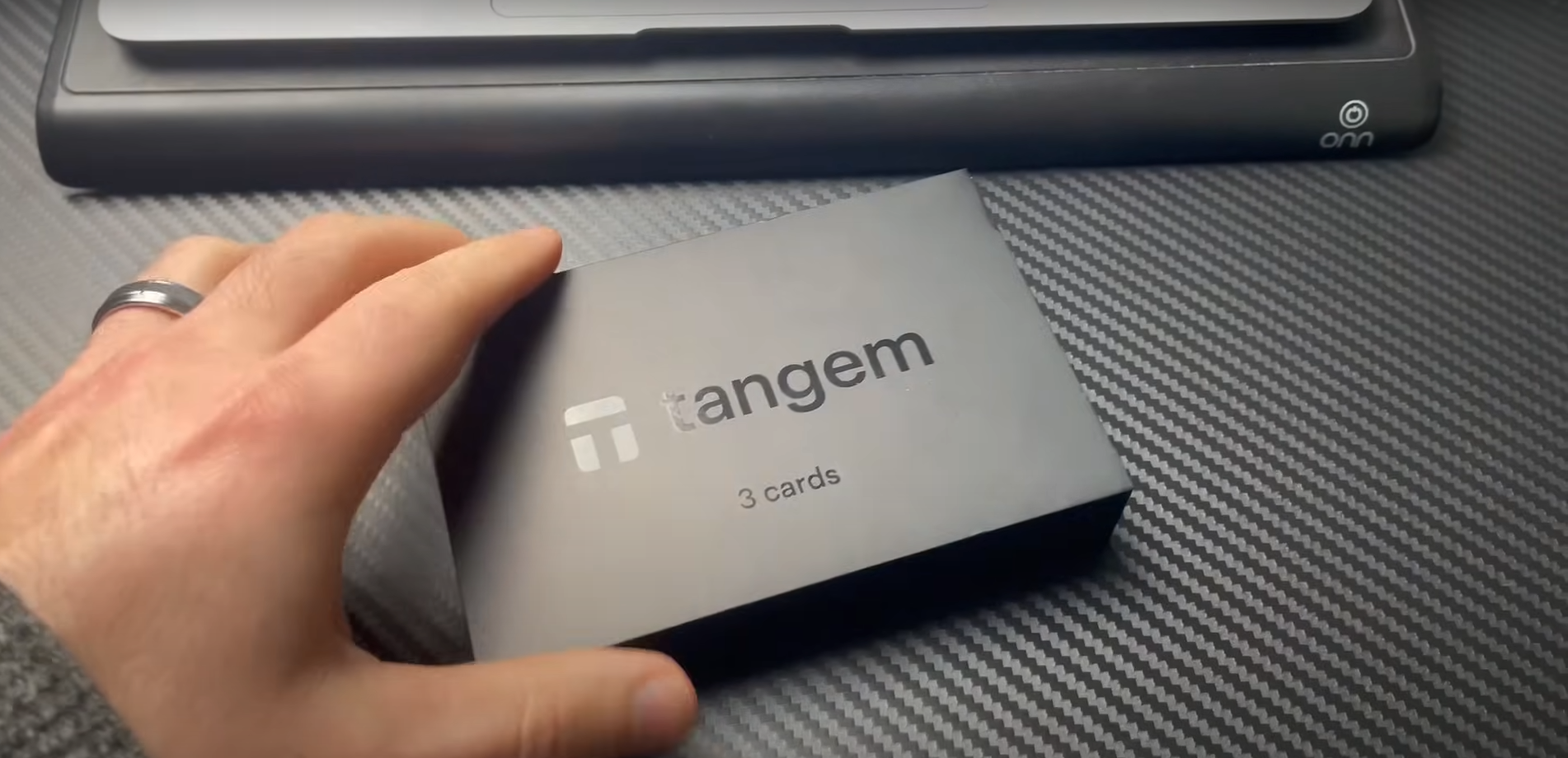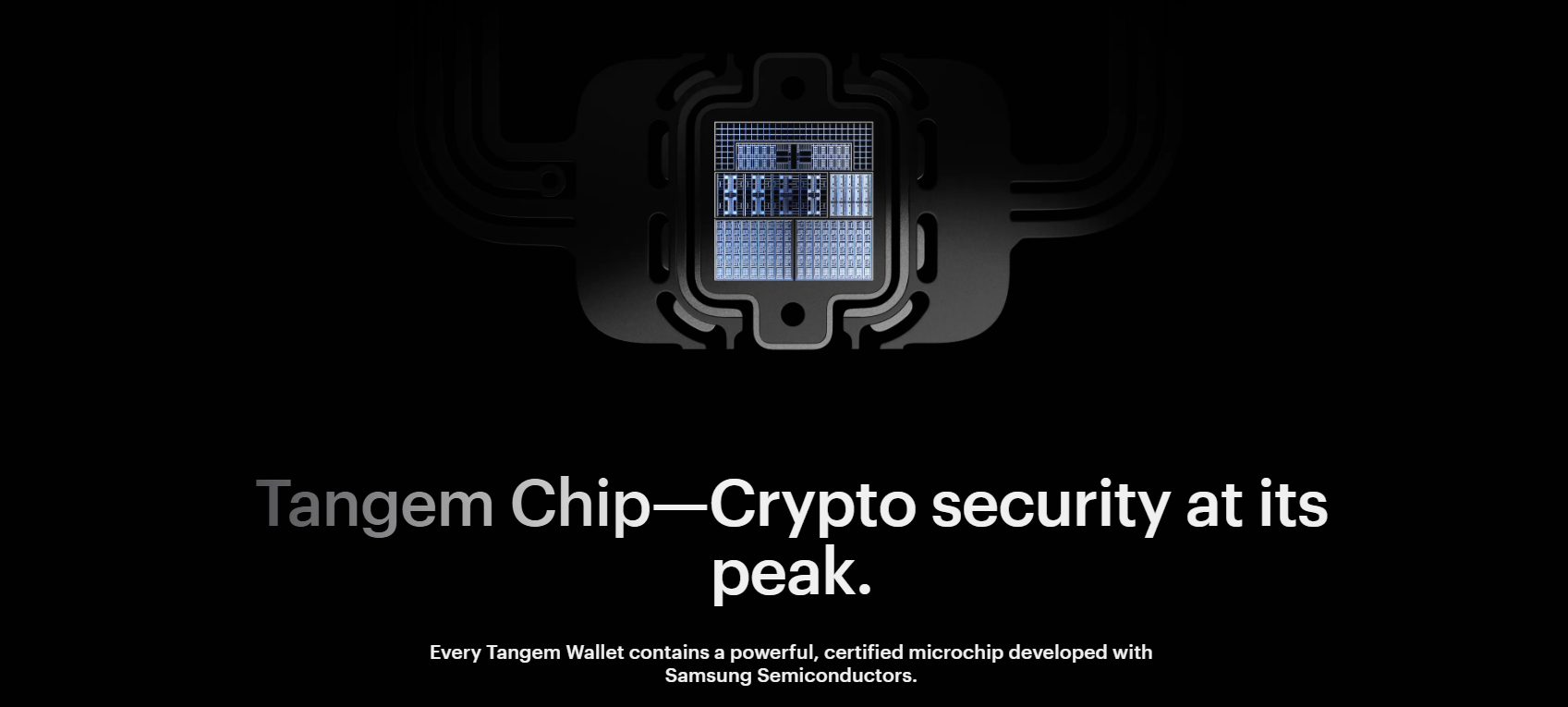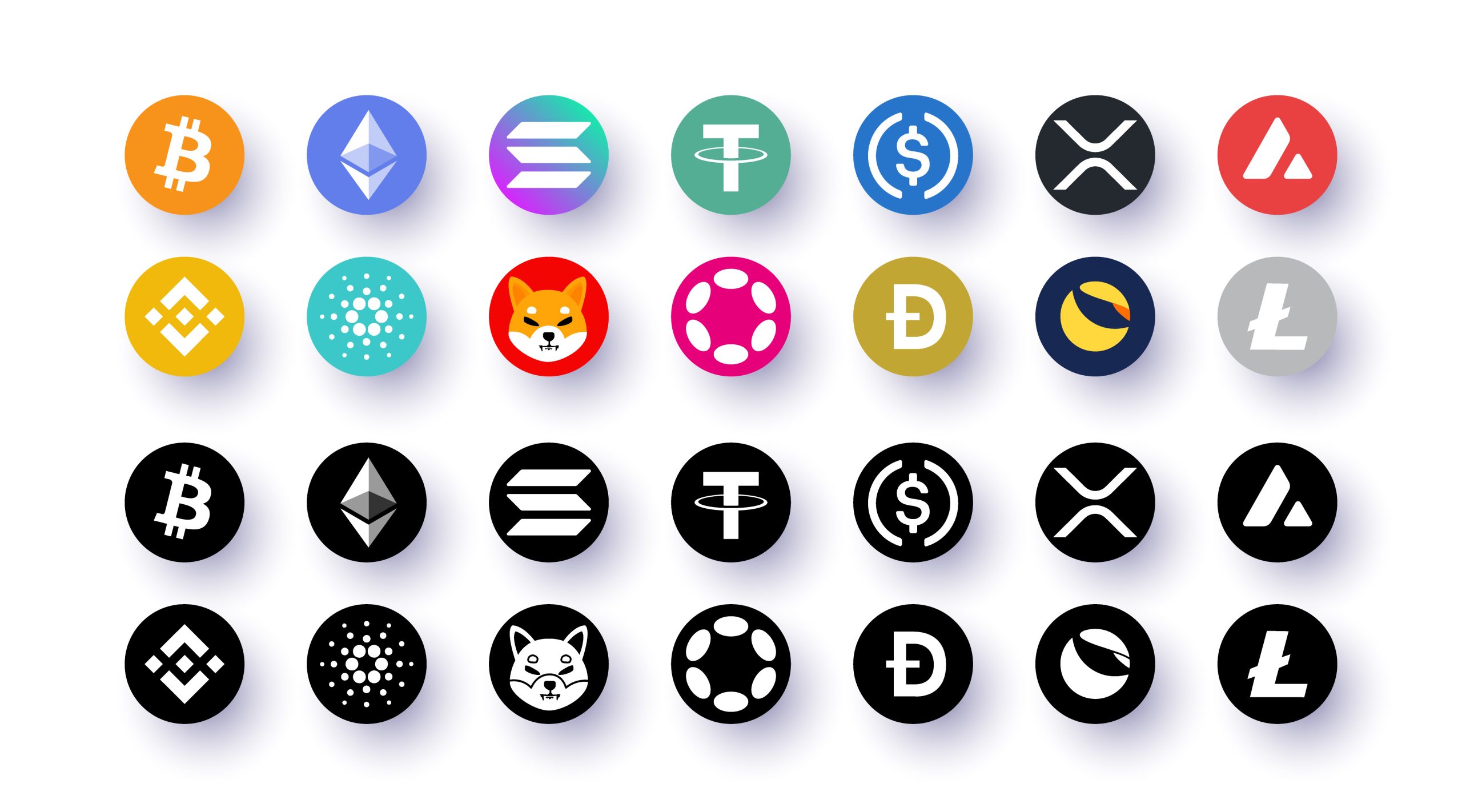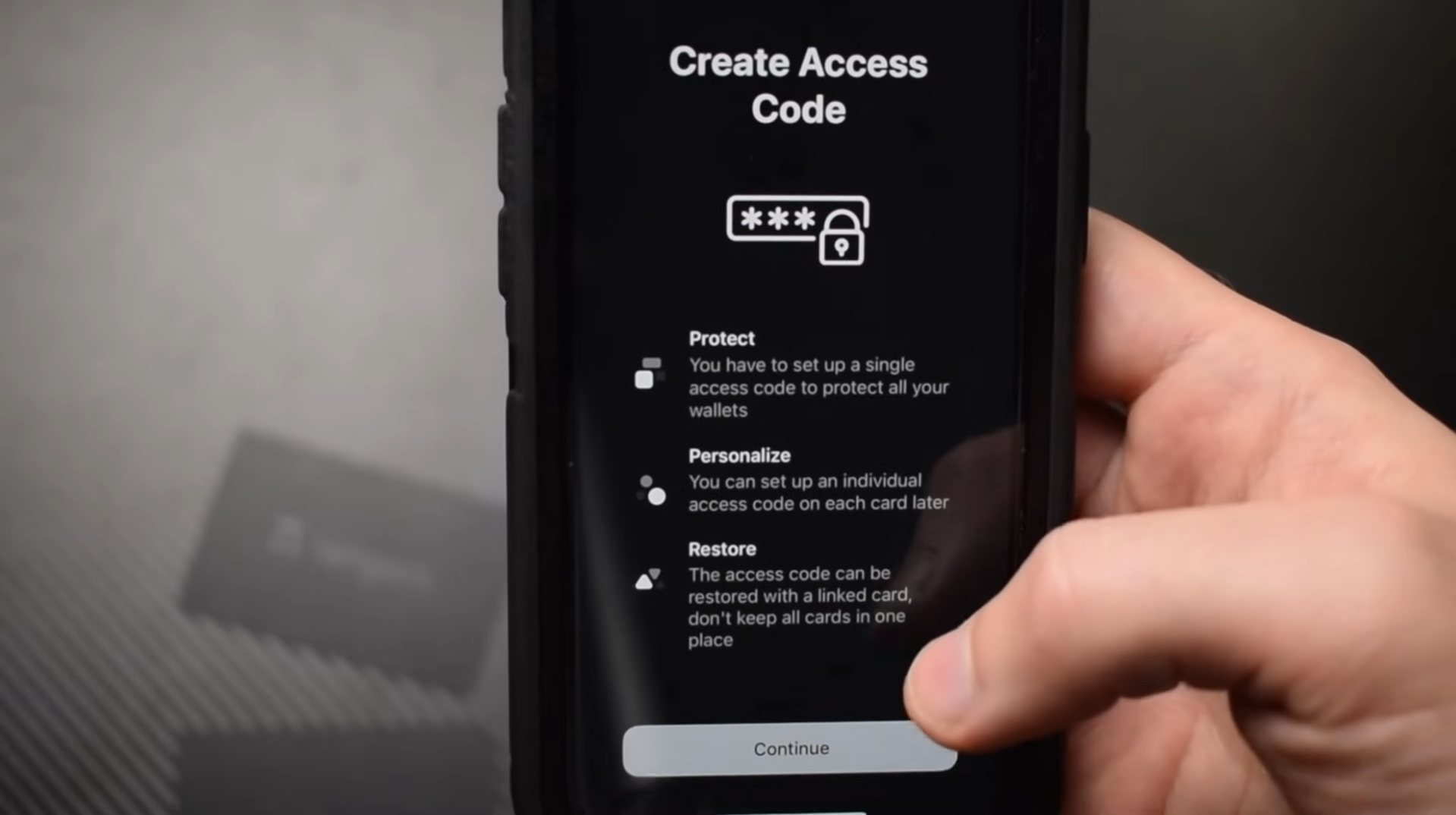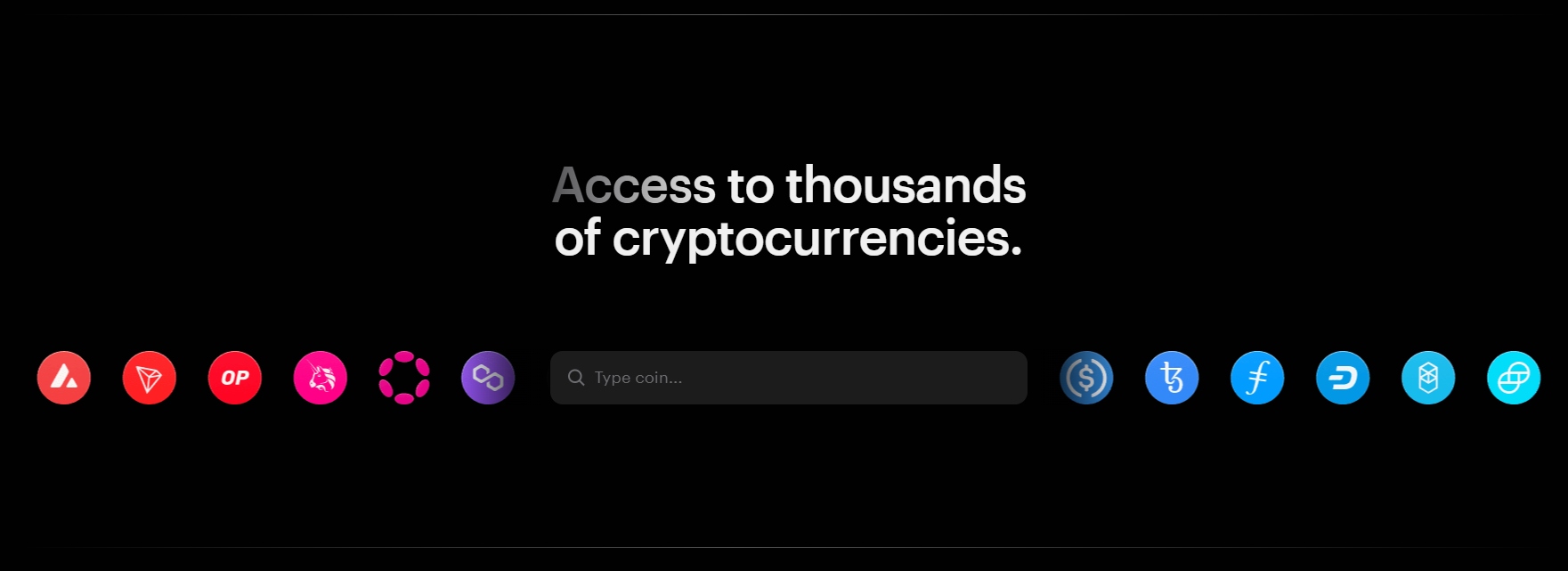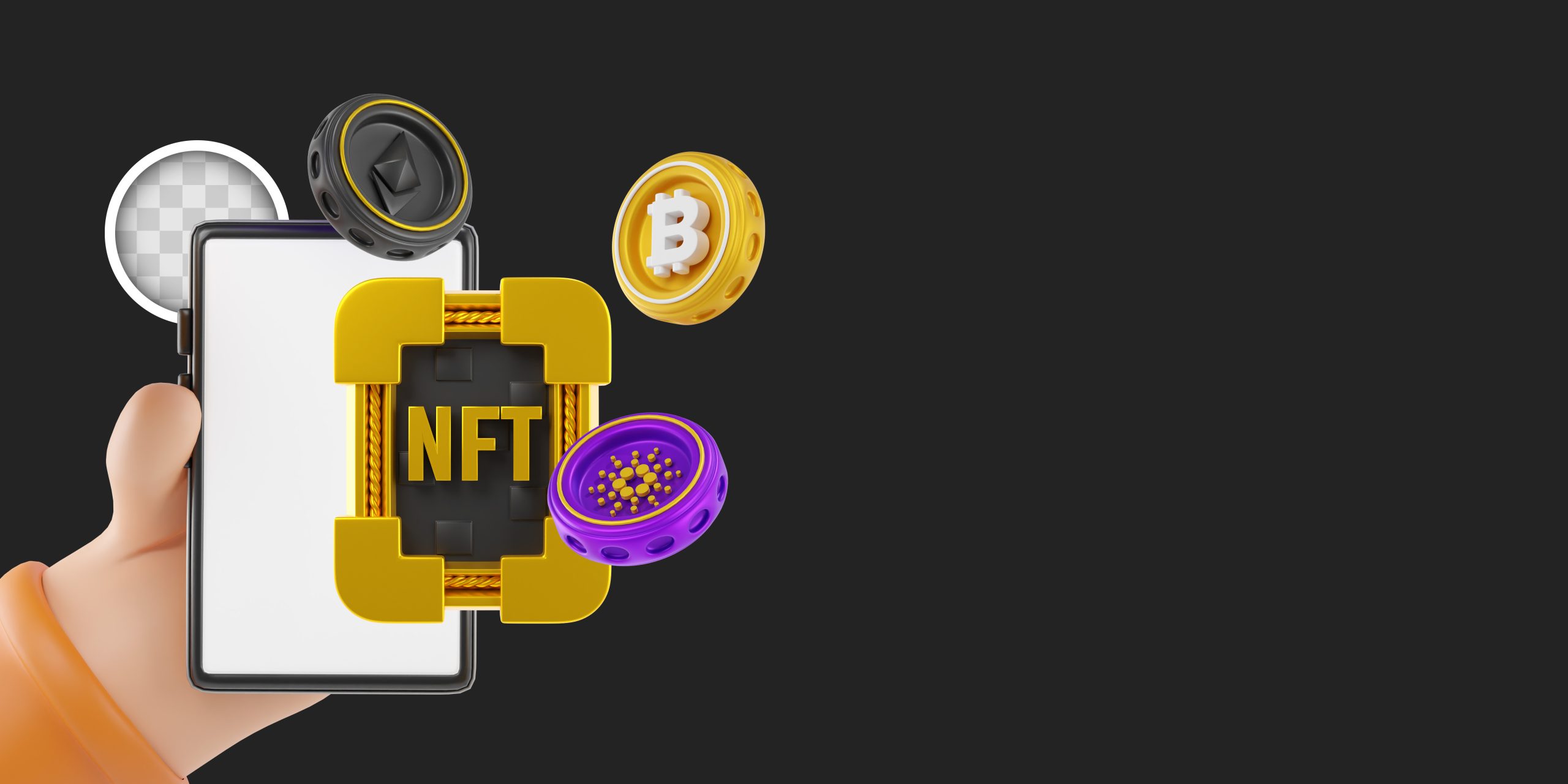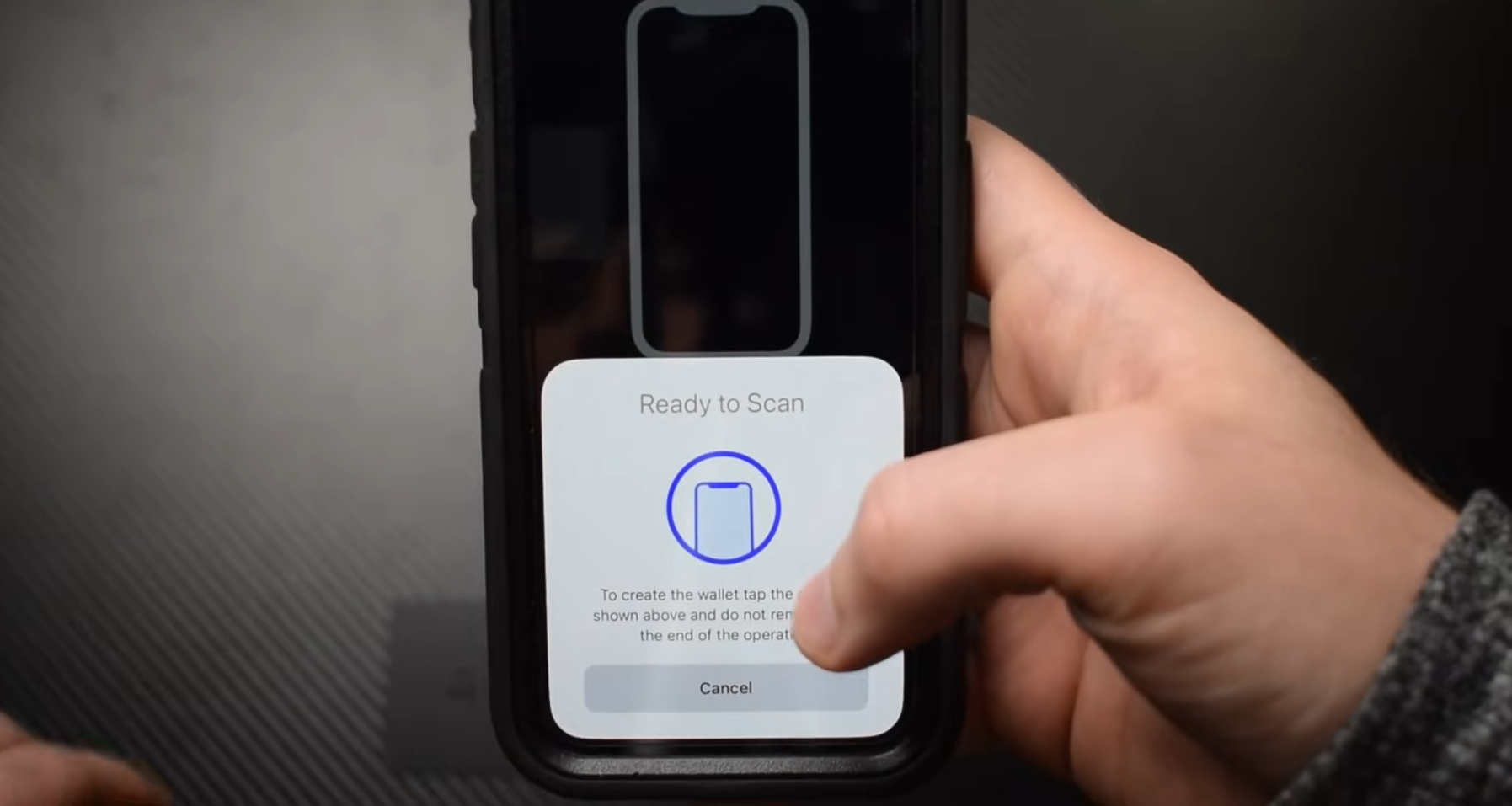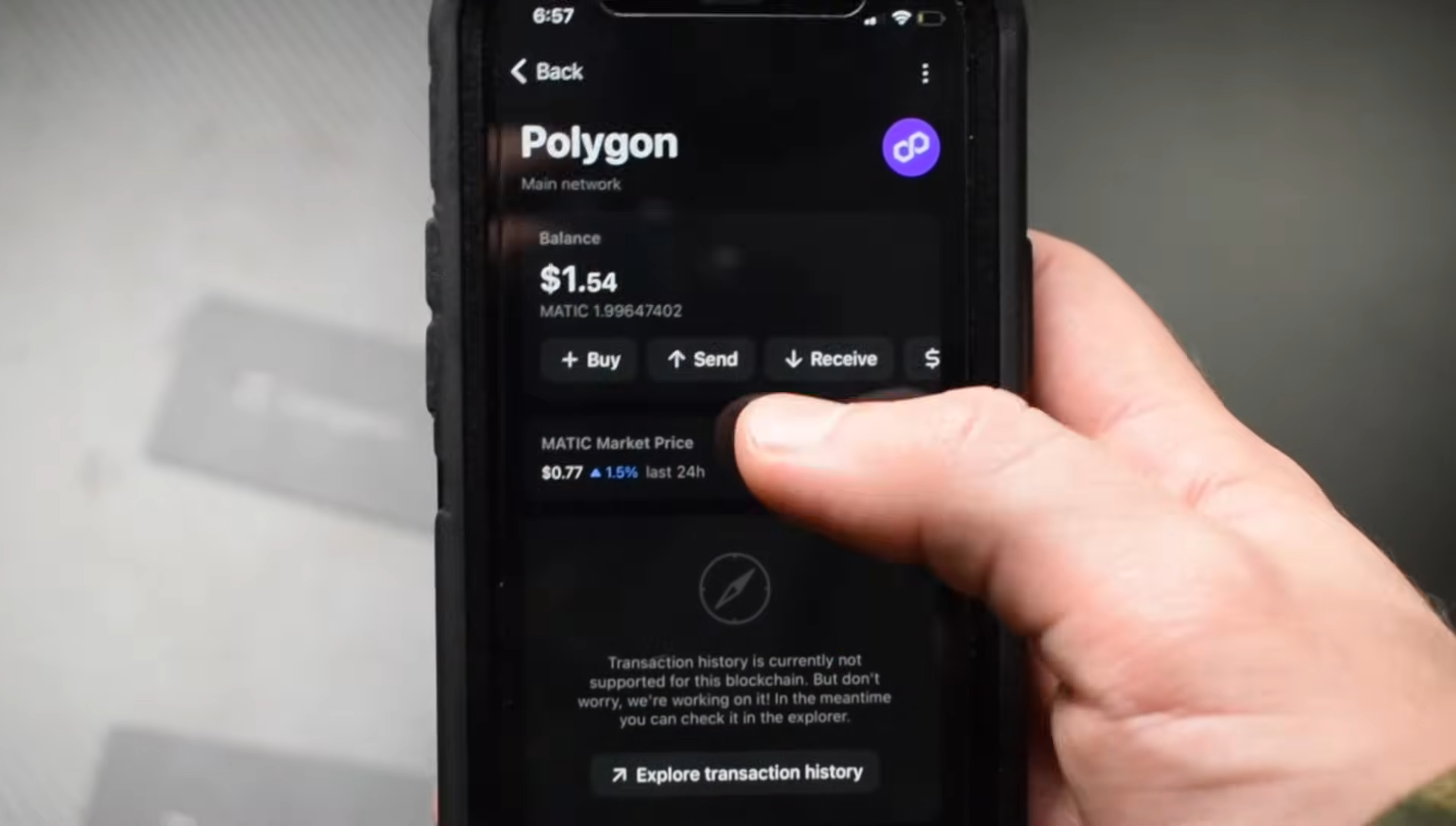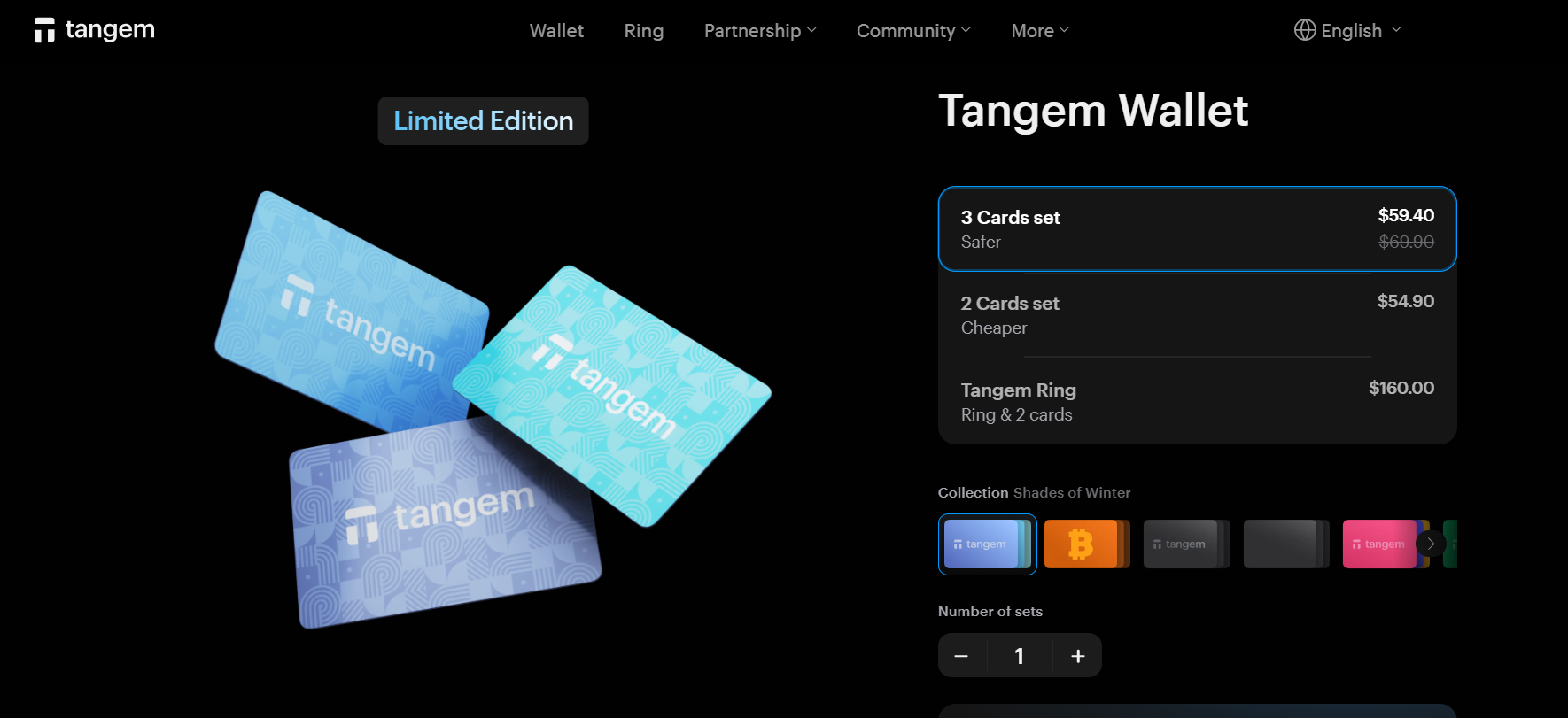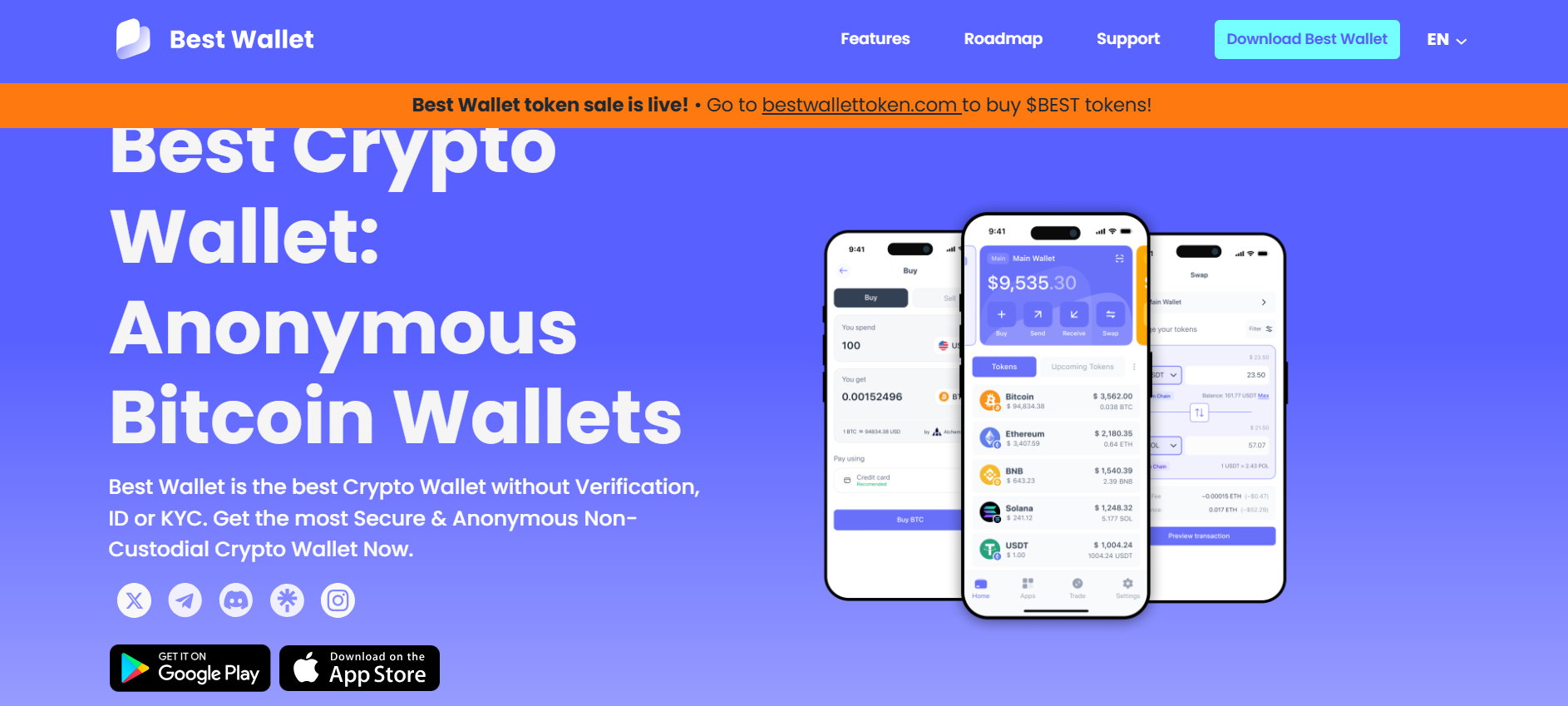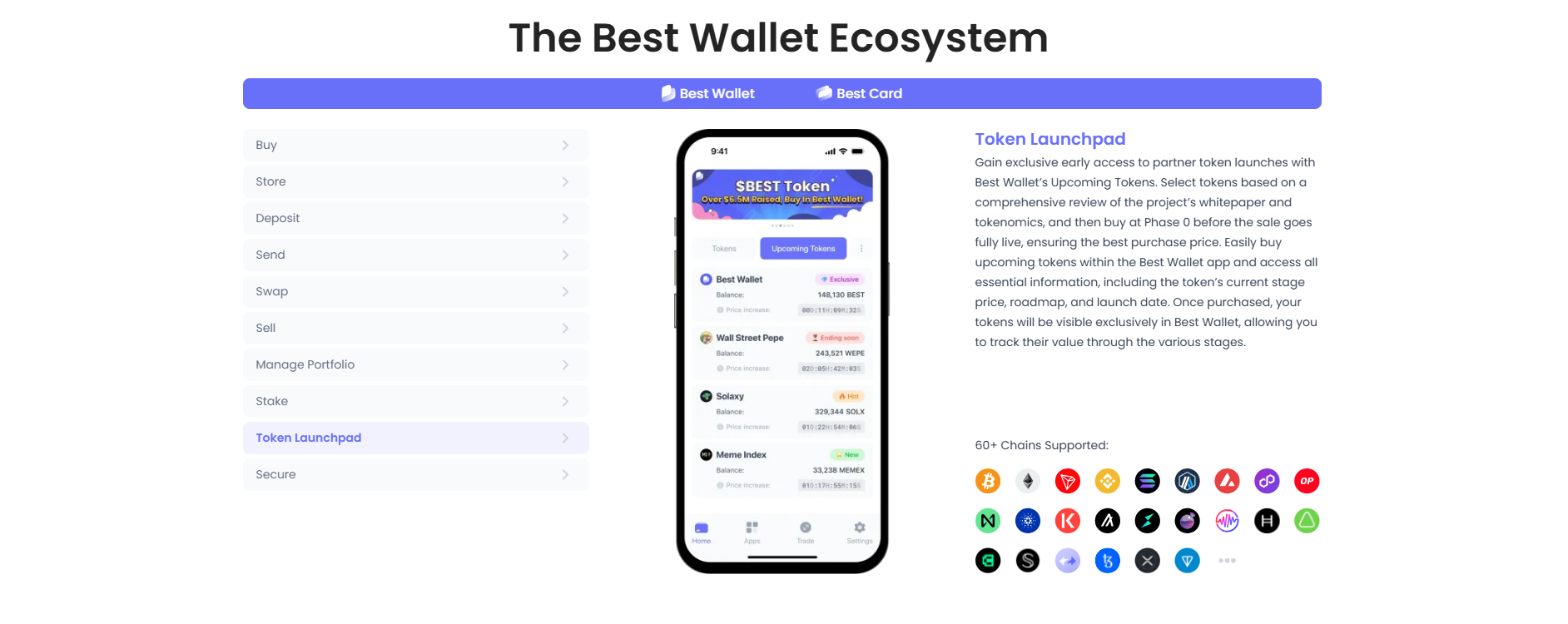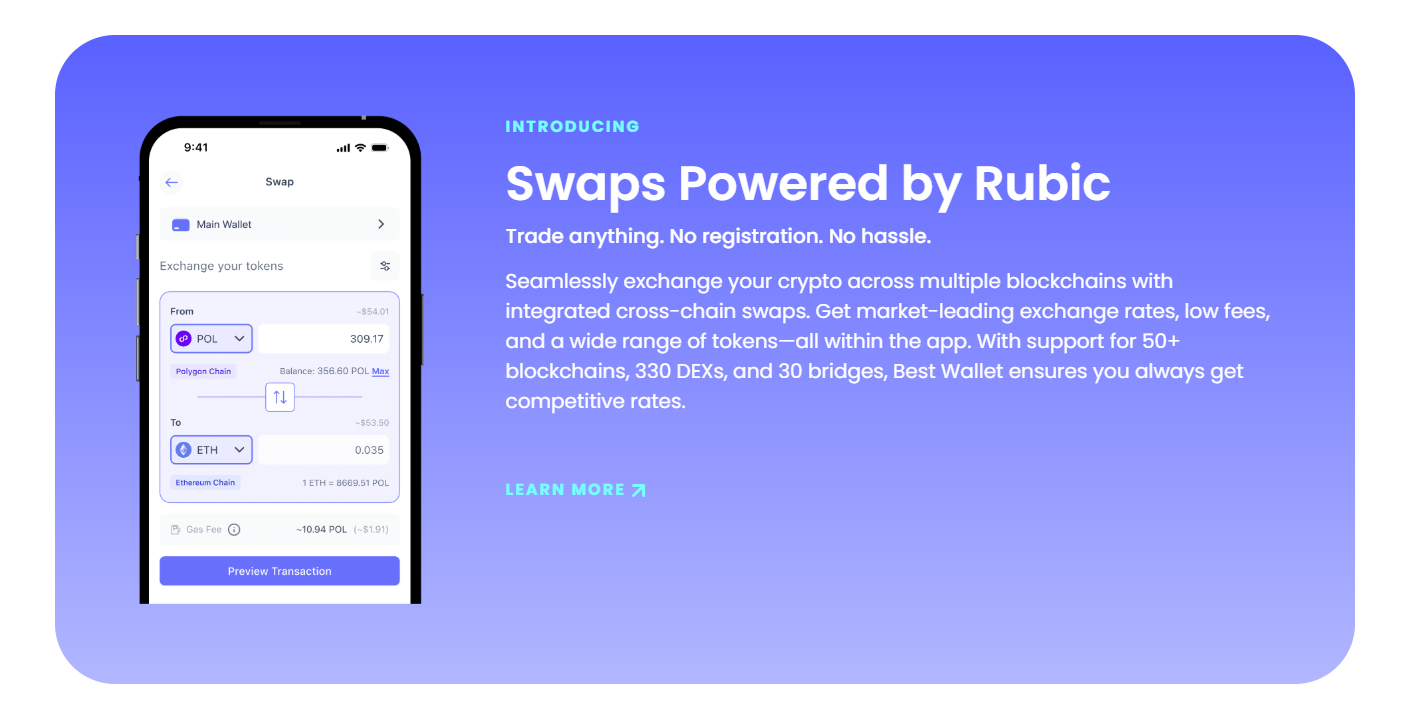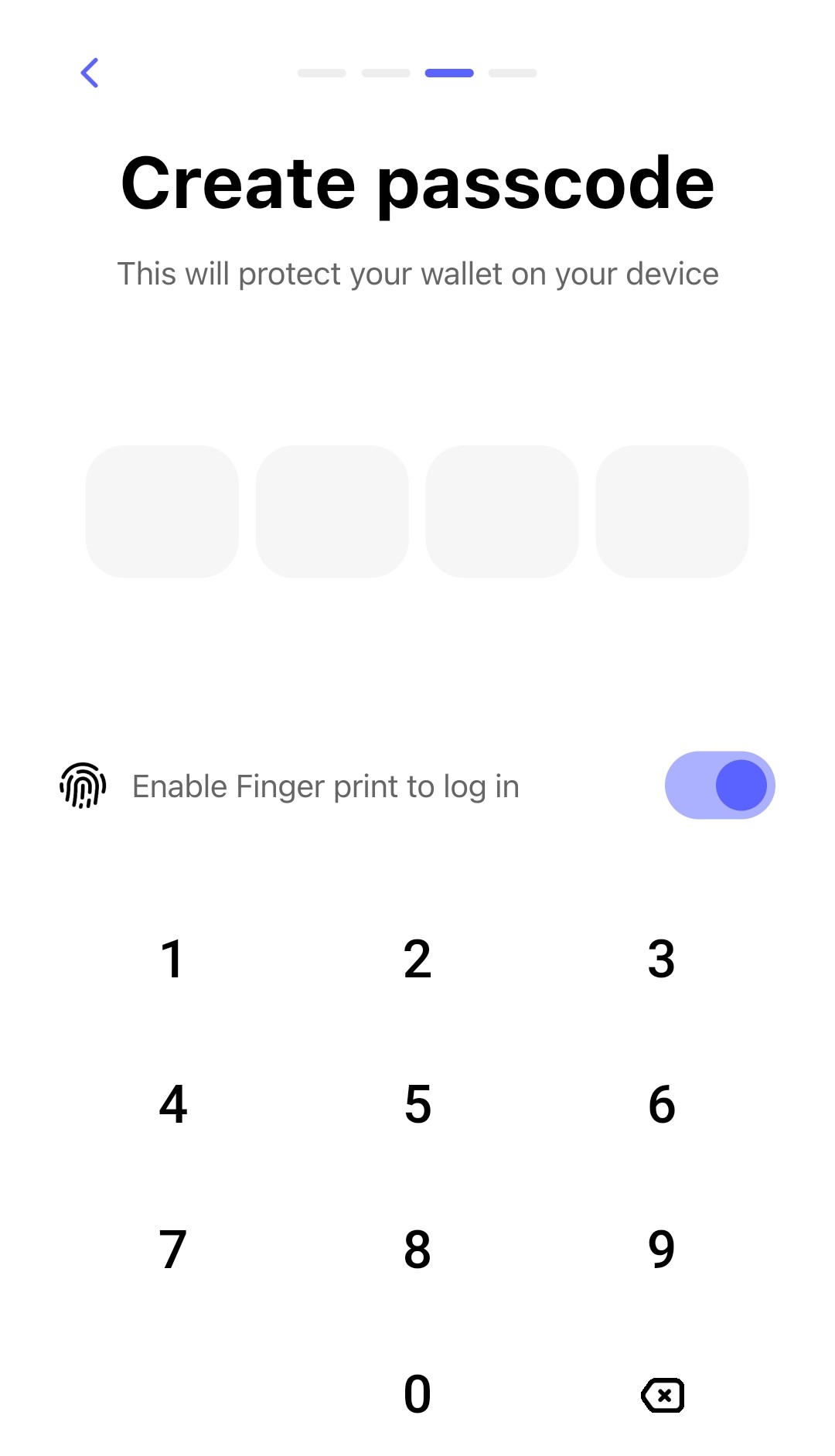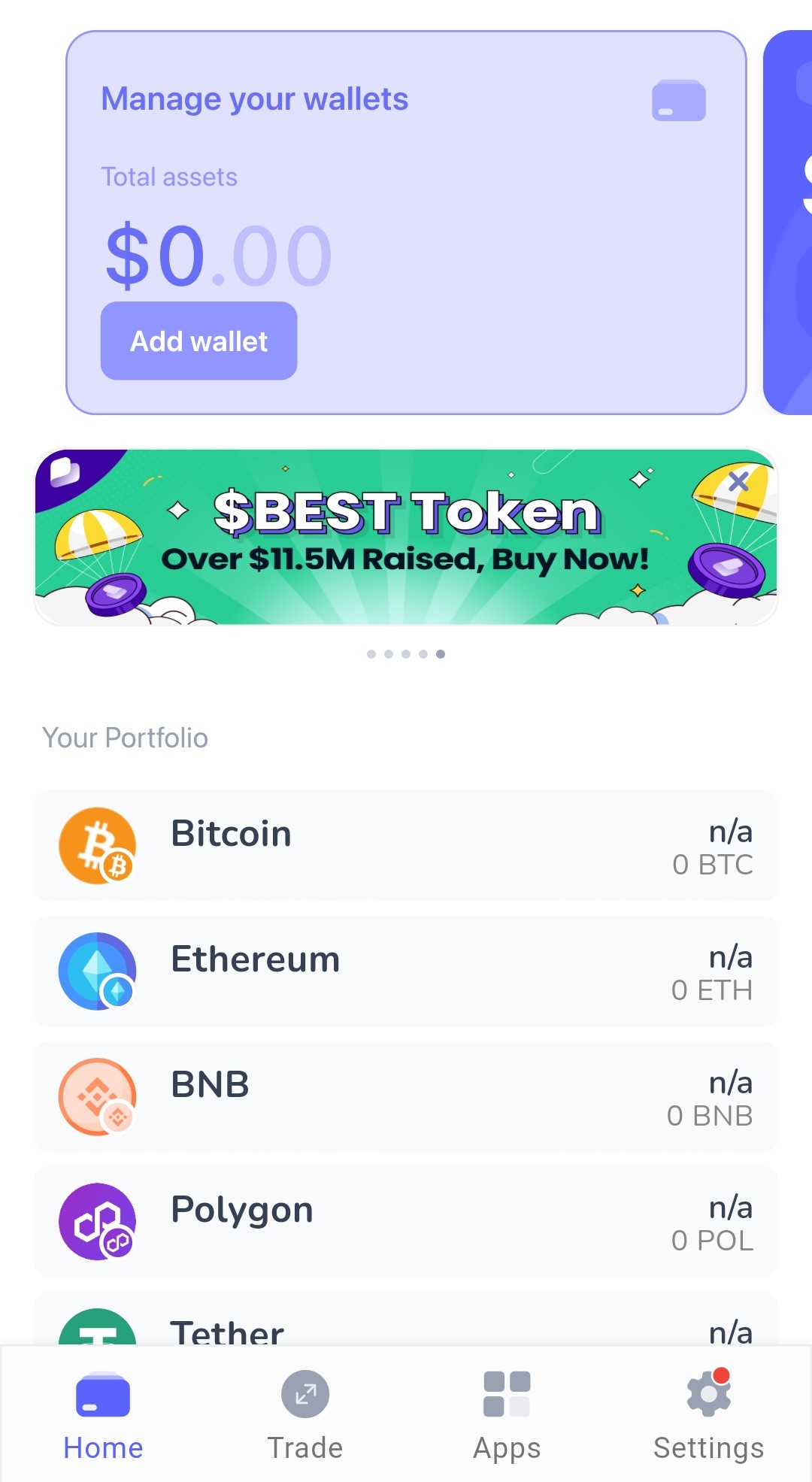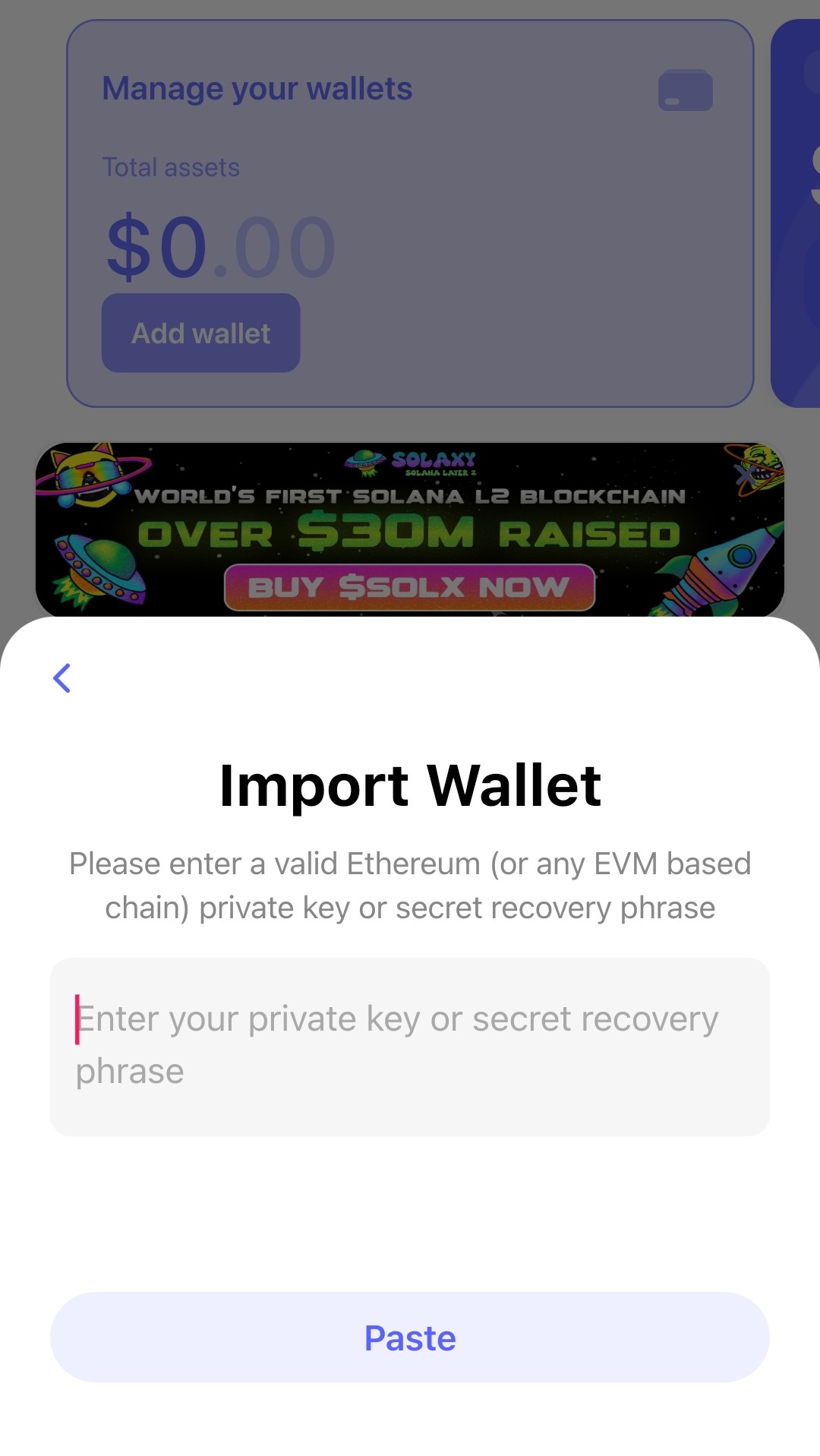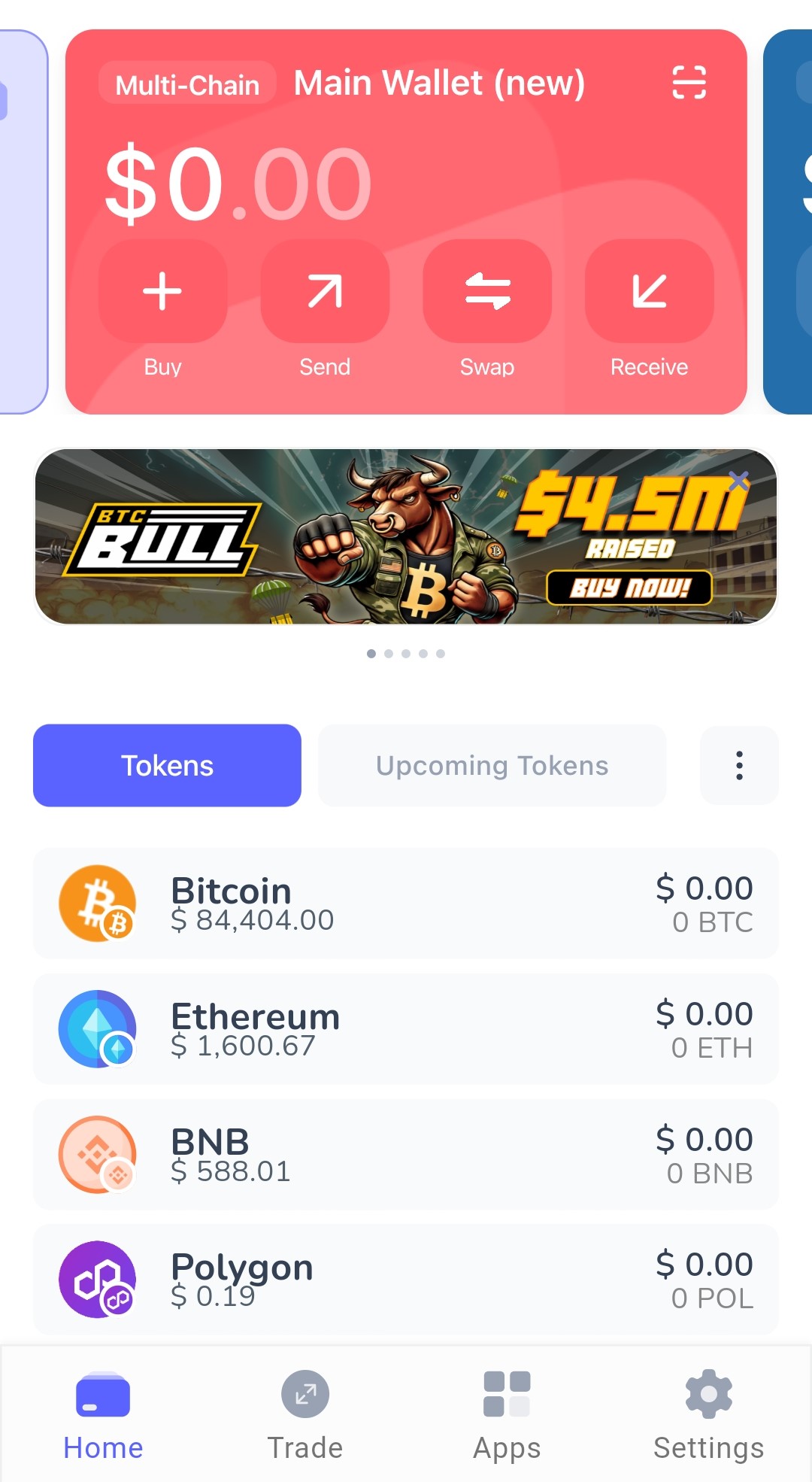Crypto wallets are broadly classified into two types: Hot and Cold. Hot wallets are always connected to the internet, while cold wallets are isolated hardware devices. Tangem is a cold wallet. Should you use it in 2025, though? Find out more about the wallet from our detailed Tangem Wallet review.
- Show Full Guide
What is Tangem Wallet?
Tangem Wallet is a hardware cryptocurrency wallet introduced in 2017 by a Swiss-based company aiming to simplify digital asset management with a smartcard approach. Unlike traditional hardware wallets, Tangem uses a credit card-sized device that connects via NFC to a mobile app. It’s very straightforward and doesn’t need complex setups or seed phrases.
Headquartered in Zug, Switzerland, Tangem quickly expanded its presence to North America, Eastern Europe, and the Asia-Pacific region. The company secured significant funding, including a major investment in 2019, which fueled further development and global reach.
Tangem Wallet supports thousands of cryptocurrencies and tokens across a wide and growing range of blockchains. Recent updates have pushed this number well over 6,000 assets, with continual additions of new networks. The wallet’s design and technology have earned it recognition for both security and ease of use. Still, its reliance on physical cards means that losing all cards without a backup can permanently lose access to funds.
Tangem Wallet Timeline 📅
Tangem was founded in Zug, Switzerland, by Andrew Pantyukhin, Andrey Kurennykh, and Anselm Schmucki. The company launched its first smartcard hardware wallet, introducing a new approach to secure, user-friendly cold storage for digital assets.
Tangem received a $15 million investment from SBI Crypto Investment Ltd., fueling global expansion and accelerating product development. The company established branches in North America, Eastern Europe, and APAC, and continued to grow its user base and technology partnerships.
Tangem underwent a full-scale rebrand and launched the next-generation Tangem Wallet with improved design, enhanced security, and a redesigned mobile app. The company also unveiled a wearable cold wallet prototype, expanding its product lineup and positioning itself as a leader in innovative crypto storage.
Tangem surpassed support for 6,000 assets and expanded compatibility to over 80 blockchains. The wallet added staking for multiple networks (including Solana, Cosmos, Polkadot, Polygon, Cardano, Avalanche, Tron, Binance Smart Chain, NEAR, Tezos, Cronos, and Kava), introduced native NFT support, improved market data and newsfeed features, and enhanced the user experience with quick action buttons and expanded language support.
Tangem announced and began pre-orders for the Tangem Ring, a wearable cold wallet device with the same security features as the Tangem card, including an NFC antenna and EAL6+ secure chip. The ring combines convenience with robust crypto security and is set for full production and marketing campaigns.
Tangem began production and testing of Tangem Pay, a payment system powered by VISA. This innovation allows users to spend crypto globally from their Tangem cold wallet, making it the world’s first self-custodial payment solution integrated with a major payment network.
Tangem continues to expand its blockchain and asset support, regularly updating its mobile app for enhanced security and usability. The company is focused on delivering new features, furthering global adoption, and maintaining its reputation for security and innovation in the hardware wallet space.
So far, Tangem has been a fairly reliable cryptocurrency wallet. User reviews of the wallet have been positive as well. Let’s explore its features.
Tangem Wallet Features
Take a quick look at Tangem Wallet key features before we dive into the details.
Feature
Details
🛡️ Custody
Non-custodial (user controls private keys stored on secure chip)
🌐 Supported Blockchains
81+ blockchains, including Bitcoin, Ethereum, Solana, Cardano, Polygon, and more
🪙 Token Support
6,000+ cryptocurrencies and tokens (BTC, ETH, ERC-20, BEP-20, and more)
🖼️ NFT Support
Yes, supports NFTs on Ethereum, Polygon, and other compatible blockchains
🔗 dApp/DeFi Integration
Yes, via WalletConnect
🔒 Security
EAL6+ certified secure chip, offline key generation, multi-card backup, optional seed phrase
🔄 In-App Trading
Swaps, fiat on-ramps, staking, and cross-chain support
📲 User Experience
Simple tap-to-sign NFC, no registration, multi-language app, intuitive interface
💳 Hardware Wallet Support
N/A (Tangem is itself a hardware wallet)
🆓 Open Source
Mobile app is open source; firmware is closed source
Physical Design and Portability
Tangem Wallet is designed as a slim, credit card-sized device, weighing just 6 grams. Its compact form factor makes it easy to carry and store discreetly. The wallet is tamper-resistant and built to withstand dust, water, and physical shocks.
NFC-Based Operation
The wallet operates using Near Field Communication (NFC) technology. Users interact with the wallet by tapping the card to their smartphone, which must have the Tangem app installed. This tap-and-go approach eliminates the need for cables, batteries, or complex device setups. The NFC communication is localized and secure, keeping private keys isolated from internet-connected devices.
Self-Custody and Private Key Management
Tangem Wallet generates private keys directly on the secure chip inside the card using a True Random Number Generator (TRNG). These keys never leave the card, and no copies exist anywhere else. This approach minimizes the risk of hacking or malware attacks.
The wallet does not require users to write down or store a recovery seed phrase by default. Instead, it offers multiple backup cards, typically two or three per wallet, so users can regain access if one of their cards is lost. Tangem also allows a BIP39-compatible seed phrase for those who prefer traditional recovery options.
Security Architecture
The secure chip in each Tangem card is certified to the EAL6+ standard, a level used in banking and biometric passports. The chip is resistant to tampering, brute-force attacks, and environmental hazards. Firmware on the card is non-upgradable, reducing potential attack vectors.
Tangem’s firmware has undergone independent audits. All sources confirm the absence of backdoors or vulnerabilities. The app’s open-source code allows for community scrutiny and transparency.
Multi-Asset and Multi-Network Support
Tangem Wallet offers extensive multi-asset and multi-network support. You can store and transact all the best crypto to buy in 2025, such as Bitcoin (BTC), Ethereum (ETH), Cardano (ADA), Solana (SOL), Litecoin (LTC), and stablecoins like Binance USD (BUSD) and Tether (USDT).
The platform lists Dogecoin (DOGE), Shiba Inu (SHIB), Pepe (PEPE), and other best meme coins on the market. It also supports thousands of Ethereum ERC-20 tokens, SPL tokens on Solana, and assets from networks like Tron (TRX), Polygon (MATIC), and Avalanche.
On the network side, Tangem currently supports 81 blockchains. This includes leading networks such as Bitcoin, Ethereum, Solana, Cardano, Polygon, Avalanche, Polkadot, Tron, XRP Ledger, and newer chains like Arbitrum, Base, zkSync Era, and Optimism. You can also interact with less common or emerging blockchains. Tangem prioritizes both mainstream and niche crypto portfolios.
Please note that you can only have one address per asset per card, which may be limiting if you prefer using multiple addresses for privacy or organizational reasons.
Mobile App Integration
Tangem Wallet’s mobile app is central to its hardware wallet experience. It’s the primary interface for managing, sending, and receiving cryptocurrencies. The app is available for both iOS and Android and relies entirely on NFC technology to communicate with Tangem cards.
To access your wallet, you tap the Tangem card on your phone’s NFC module while the app is open. The upside is that you won’t need cables, batteries, or Bluetooth connections.
The app supports viewing balances, transaction histories, and portfolio details across thousands of assets and over 80 blockchains. You can send and receive crypto, scan QR codes for addresses, and customize wallet settings such as theme color and wallet names.
WalletConnect integration further allows you to interact with successful decentralized apps (dApps) and DeFi protocols, though direct staking is only available via dApps on EVM-compatible networks.
Despite its simplicity, the app has some limitations. It is only compatible with NFC-enabled smartphones, so users with older or NFC-lacking devices cannot use Tangem. The app does not support desktop platforms, and all wallet management is restricted to mobile.
Advanced features like multi-address generation, native staking, or multisig are either absent or in development. If you lose all linked cards, recovery options are limited, as there is no standard seed phrase backup.
Privacy and User Control
Tangem does not collect or store any personal information. The wallet operates without requiring user registration, and all transaction data remains private. The app collects minimal diagnostic data, but wallet addresses and private keys are never transmitted or stored externally.
Risks and Downsides
Tangem’s reliance on physical cards introduces a significant risk: if all backup cards are lost and no recovery phrase has been set, access to funds is permanently lost. The wallet’s security depends heavily on the user’s ability to safeguard the cards. Additionally, the lack of a built-in display means users must trust the mobile app interface for transaction details, which could concern those seeking an extra layer of verification.
Tangem Wallet – Supported Chains & Cryptocurrencies
Tangem Wallet gives you access to a remarkably broad range of blockchains and cryptocurrencies, making it one of the more versatile hardware wallets available today. As of early 2025, you can manage over 13,000 cryptocurrencies and tokens from a single Tangem card.
This includes support for major coins like Bitcoin, Ethereum, Solana, Cardano, Litecoin, and many others. The wallet’s compatibility extends to a growing list of networks, now totaling at least 81.
You’ll find support for a diverse mix of blockchain platforms. Tangem covers EVM-compatible networks such as Ethereum, Polygon, and Binance Smart Chain, as well as non-EVM chains like Solana, Cardano, and Casper. Recent updates have added networks like Sui, Blast, Cyber, Mantle, Alephium, and Chiliz EVM, further expanding your options.
The wallet also integrates with specialized chains like Energy Web for the energy sector, Fact0rn for decentralized storage, and Core DAO for scalable EVM solutions. This broad compatibility ensures you can store, send, and receive a wide variety of assets without juggling multiple wallets.
NFT support is another area where Tangem is making significant strides. You can now manage and interact with NFTs across Ethereum, Solana, TON, and other compatible blockchains directly from the wallet app.
Despite its impressive range, Tangem’s rapid expansion means you might occasionally encounter new or niche tokens that aren’t immediately supported. However, the wallet’s ongoing updates and roadmap show a clear commitment to regularly adding more networks and assets. If you hold a particularly obscure asset, it’s worth checking the Tangem website or app’s search function to confirm compatibility.
One potential downside is the complexity of supporting so many chains and tokens. While Tangem’s interface aims to simplify asset management, the sheer volume of options can be overwhelming.
How Does the Tangem Wallet Work?
Initial Setup
When you start with Tangem Wallet, you receive a set of two or three credit card-sized devices. Each card contains a secure element chip and an NFC antenna.
To activate your wallet, you first install the Tangem app on your NFC-enabled smartphone. The setup process begins by scanning one of the cards with your phone. The app generates a unique private key directly on the card’s chip. You then scan backup cards as well. All cards are equal in function, and you can set an access code for added security.
Managing Wallets and Assets
Once your wallet is set up, the Tangem app becomes your control center. You can manage multiple Tangem wallets within the app, switching between them with a swipe or by selecting from a list.
Adding cryptocurrencies is straightforward: you tap “Manage tokens,” select the desired assets and networks, and save your changes. The wallet supports thousands of tokens across dozens of blockchains, and you can also add custom tokens by pasting their contract addresses.
Sending and Receiving Crypto
To send cryptocurrency, you select the token and network, enter the recipient’s address or scan a QR code, and confirm the transaction.
The app prompts you to tap your Tangem card to the phone, which signs the transaction using the private key stored on the card. Receiving assets is as simple as sharing your wallet address, which you can copy or display as a QR code.
Security and Access
Tangem is widely known as a very secure wallet. However, it recently experienced a security breach that exposed user seed phrases. Although they’ve addressed the issue, it has raised community concerns.
Tangem Wallet emphasizes security by keeping private keys entirely offline. The keys never leave the card, and transactions can only be signed when the card is physically present and tapped to an authorized device. You can set up an access code for each card, adding a layer of protection if the card is lost or stolen.
If you have multiple cards, losing one does not compromise your assets, but losing all cards without a backup or recovery phrase means your funds are unrecoverable.
Downsides and Considerations
While Tangem’s tap-and-go method is convenient, it relies heavily on physical cards. If all cards are lost and you haven’t set up a recovery phrase, you cannot recover your assets. The wallet also lacks a built-in display, so you must trust the app for transaction details. This design choice simplifies the hardware but may concern those who want an extra layer of on-device verification.
Tangem Wallet: Advantages & Disadvantages
Tangem Wallet stands out for its card-sized hardware, NFC tap-to-sign convenience, and a recovery system that eliminates traditional seed phrases. With its portability, affordability, and robust security, Tangem has risen as one of the best Web3 wallets in 2025. However, its reliance on physical cards and mobile-only access introduces some notable limitations.
✅ No need for recovery seed phrase: Recovery uses backup cards instead of a written seed phrase, reducing risk of phrase loss. ✅ Highly portable, card-sized design: The wallet is as small and light as a credit card, making it discreet and easy to carry. ✅ EAL6+ secure chip, strong security: Uses a high-security chip, offering robust protection against physical and digital attacks. ✅ Multi-currency & blockchain support: Supports thousands of cryptocurrencies and dozens of blockchains in one device. ✅ Affordable compared to competitors: Priced lower than many other hardware wallets, making it more accessible. ✅ No batteries, cables, or charging: Powered by your phone’s NFC, so there’s no need for charging or cables. ✅ Open-source mobile app: The Tangem app’s code is publicly available for transparency and community review. ✅ Smart backup with multiple cards: For a flexible and secure recovery method, you can use two or three cards. ❌ Losing all cards means permanent loss of funds: If you lose every card and haven’t set up a recovery phrase, your funds are unrecoverable. ❌ No desktop support: All wallet management is limited to the mobile app; no desktop interface is available. ❌ Physical damage can render cards unusable: Cards, while durable, can still be destroyed or damaged beyond use. ❌ Lacks advanced features (e.g., native staking): Some advanced features are missing or require third-party dApps. ❌ Limited to mobile app interface: All interactions must be done via the mobile app, which may not fit everyone’s workflow. ❌ Not indestructible despite durability claims: Cards are robust but not immune to all forms of loss, destruction, or theft. ❌ Must trust app for transaction verification: No built-in display means you rely on the app for transaction details and verification. ❌ Third-party fees on some in-app services: Services like swaps or fiat purchases may incur extra fees from external providers.
Advantages
Disadvantages
✅ Extremely easy and fast setup: Activation takes minutes with a tap-and-go NFC process and a simple mobile app.
❌ Relies on NFC-enabled smartphones only: You must have a smartphone with NFC; desktops and non-NFC devices are not supported.
Where Can You Buy Tangem Wallet & How Much Does It Cost?
You can purchase the Tangem Wallet directly from the official Tangem website. The website ships to most countries worldwide except for a few restricted regions, ensuring you receive a genuine product with full warranty coverage.
Tangem also works with a network of authorized retailers and partners in various regions, including India, Southeast Asia, and the Middle East. For example, in India, Etherbit.in is an official partner, offering local stock and fast delivery. In Thailand, SIAMBC is a recognized reseller, while in the UAE, Virgin Megastore carries Tangem wallets both online and in-store.
Price in Different Regions
Region
2-Card Pack Price
3-Card Pack Price
Notes
USA
$54.90
$59.40 (offer price)
Prices may vary with shipping and taxes
UK
£49.99
£65.99
Available from local retailers
Canada
~$68 CAD (est.)
~$95 CAD (est.)
Based on USD conversion, may vary locally
Australia
AU$125
(Est. AU$170)
2-pack price from eBay Australia
Germany
~€47 EUR
~€66 EUR
Based on $50–$70 USD conversion
Russia
~5,000 RUB (est.)
~7,000 RUB (est.)
Official site, promo codes may apply
Switzerland
~CHF 45 (est.)
~CHF 63 (est.)
Based on USD/CHF exchange rates
Singapore
~SGD 68 (est.)
~SGD 95 (est.)
Based on USD/SGD exchange rates
France
~€47 EUR
~€66 EUR
Similar to Germany, available via EU resellers
UAE
~AED 199 (est.)
~AED 269
Official UAE retailers, e.g., Virgin Megastore
El Salvador
~$50 USD (est.)
~$70 USD (est.)
Based on international pricing, local availability varies
India
₹5,799
₹6,499
Official pricing from Etherbit.in, includes all taxes
Thailand
(Not listed)
฿2,660–฿2,800 THB
3-card set price from SIAMBC and Bitcast resellers
Each Tangem Wallet comes with a 25-year warranty when purchased from official sources. However, prices may fluctuate depending on currency rates, regional taxes, and retailer promotions.
Buying only from authorized sellers is important to ensure product authenticity and access to warranty support. While Tangem is competitively priced compared to other hardware wallets, you should factor in the cost of shipping and any local import duties if purchasing internationally.
Why Best Wallet Might Be A Better Alternative
While Tangem Wallet can be a solid place for your crypto, it comes with quite a few drawbacks.
First, the initial investment. You must spend at least $54.90 for a set of two cards, which is their cheapest package. Also, at least one card must be physically present for any transaction via the app. And guess what happens if your phone isn’t NFC-enabled? Yep, you cannot use the wallet. Those using budget phones or entry-level devices cannot use Tangem Wallet without changing their device.
So why not use a feature-rich hot wallet and invest directly in assets instead of purchasing more hardware? Introducing Best Wallet.
Best Wallet is a non-custodial hot wallet that does not require any prior investment. Simply download the app, add your wallet, and start trading! You can trade on the go and access the best Web3 apps directly within the wallet. The wallet also includes a multi-chain NFT gallery for managing NFTs across various networks.
Best Wallet vs Tangem Wallet: Comparison
Here’s why Best Wallet may be a better option as your first crypto wallet:
| Feature | Best Wallet | Tangem Wallet |
| Supported Blockchains | 60+ blockchains, including all major L1s and L2s. | 60–78 blockchains, strong multi-chain support. |
| Token Support | 1,000+ cryptocurrencies, DeFi tokens, and custom tokens. |
6,000+ assets, including NFTs on supported chains.
|
| Cross-Chain Swaps | Yes, built-in DEX aggregator for cross-chain swaps. |
Swaps available, but only within supported networks; 0.35% fee.
|
| Staking/Yield | Built-in staking aggregator, compare yields, earn passively. | Staking is available for select assets via the app. |
| Fiat On/Off Ramp | Integrated buy/sell with cards, e-wallets, and bank transfer. |
Buy/sell via third-party (Mercuryo, MoonPay); fees vary.
|
| NFT Support | Multi-chain NFT gallery, manage NFTs across dozens of networks. |
NFT support on major networks; managed via app.
|
| Security | Software-based: 2FA, biometrics, MPC, insurance, encrypted key shards. |
Hardware-based: NFC chip, multi-card backup, no seed phrase needed.
|
| Backup/Recovery | Encrypted cloud backup, MPC, seed phrase option. |
Multi-card backup; no seed phrase by default (optional in v2.0).
|
| Device Type | Mobile app, browser extension (in development). |
Hardware card, mobile app required for management.
|
| Ease of Use | Intuitive interface, portfolio tracker, address book, multi-wallet support. |
Extremely beginner-friendly, tap-and-go setup, no cables needed.
|
| Unique Features | Early token launch access, upcoming crypto debit card, and portfolio analytics. |
Tap-to-transact, no battery, 25-year warranty, Swiss-based.
|
Best Wallet: Key Advantages Over Tangem
No Upfront Cost and Instant Access: Best Wallet is free to download and use, while Tangem requires users to purchase physical NFC cards, which can cost between $49 and $144, depending on the package.
There are no shipping delays with Best Wallet; users can access and set up their wallet immediately from anywhere in the world, whereas Tangem users must wait for physical delivery, which may be subject to regional restrictions.
No Hardware Dependency: Best Wallet operates entirely as a software solution, so users do not need to carry or track physical cards. This eliminates the risk of losing access due to lost, stolen, or damaged hardware-a concern with Tangem, where losing all backup cards means permanent loss of funds unless a recovery phrase was set up in advance.
Device Compatibility and Flexibility: Best Wallet works on any smartphone or device, including those without NFC capability, and a browser extension is in development. In contrast, Tangem is limited to NFC-enabled smartphones and does not support desktop or non-NFC devices.
Easier Recovery and Backup Options: Best Wallet offers encrypted cloud backup, multi-party computation (MPC), and traditional seed phrase recovery options, providing multiple avenues for account recovery if a device is lost or replaced.
Tangem relies primarily on multi-card backup (with no seed phrase by default), so losing all cards results in unrecoverable funds unless the user has proactively set up an optional BIP39-compatible seed phrase.
Integrated Features and User Experience: Best Wallet includes built-in features such as a DEX aggregator for cross-chain swaps, staking/yield aggregator, NFT gallery, portfolio tracker, and early token launch access.
Tangem supports thousands of cryptocurrencies and NFTs, but some advanced features (like native staking or broad NFT management) may be less comprehensive or require third-party services.
Global Accessibility: Best Wallet can be downloaded and used instantly from anywhere, while Tangem’s physical product may face shipping restrictions and is not always available in all regions.
How to Open a Best Wallet (Wallet)
Download Best Wallet by clicking the button below. Alternatively, you can install it on your device by going to the Apple App Store or Google Play Store.
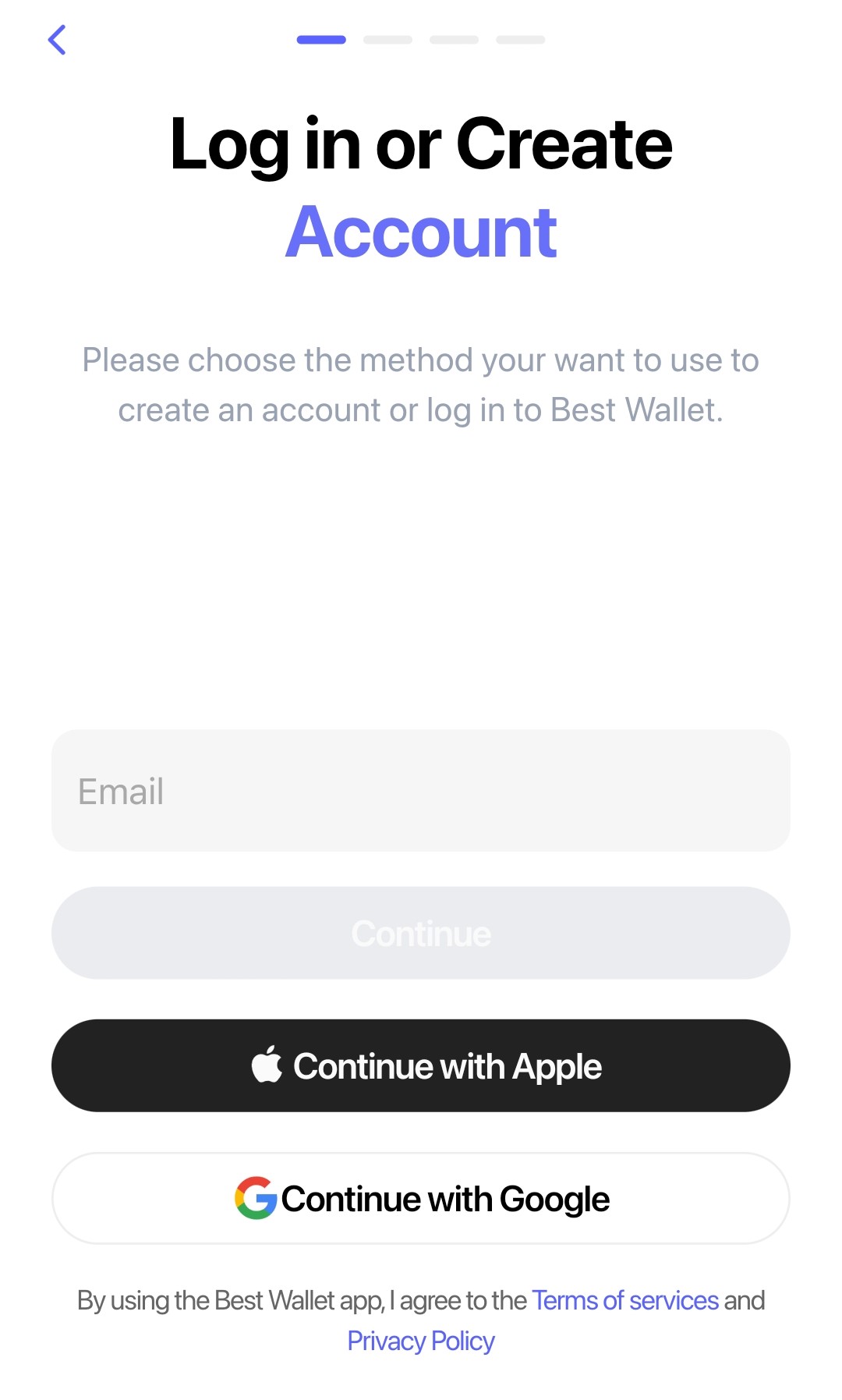
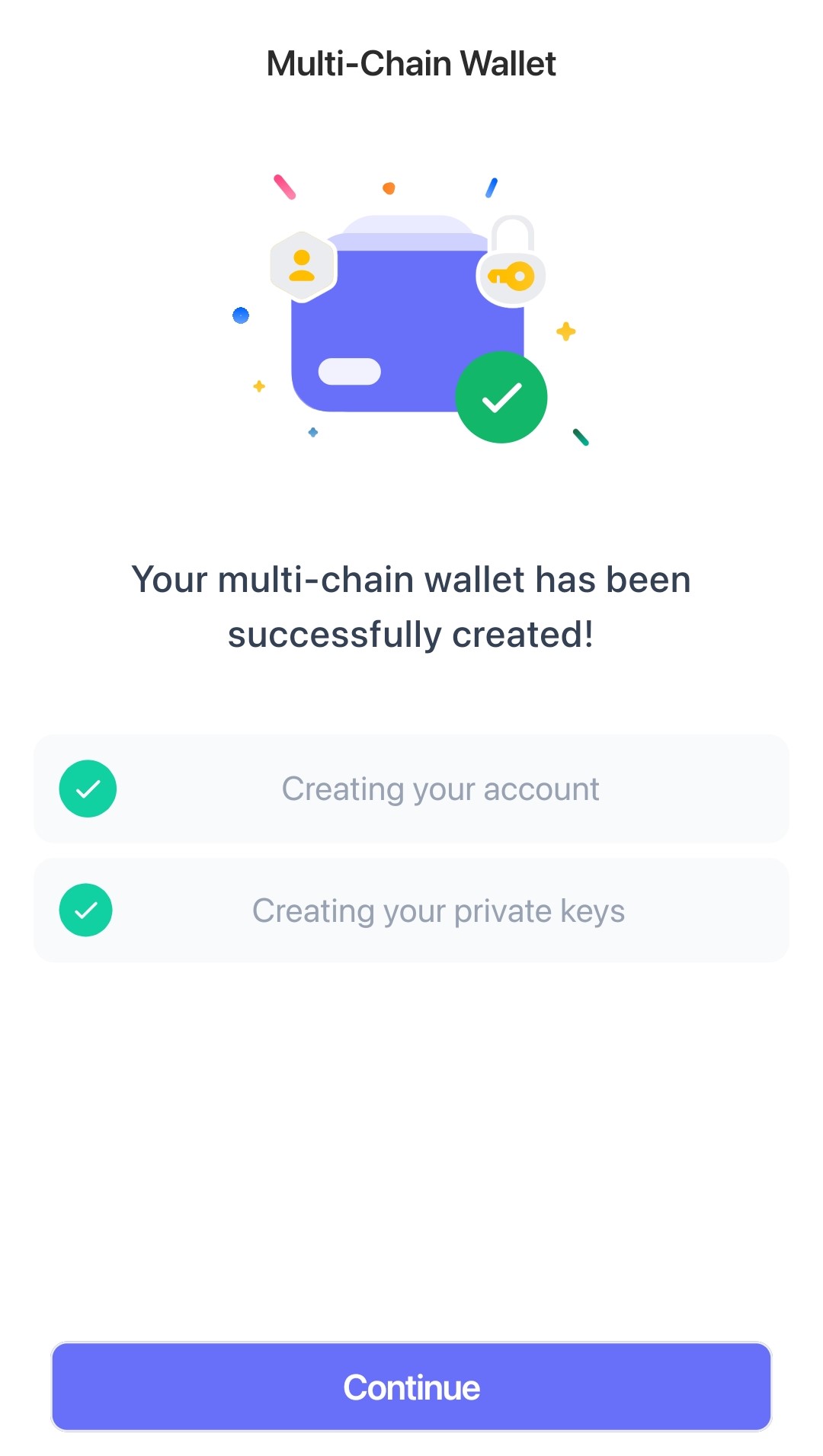
1. On the ‘Home’ tab, swipe right on ‘Wallet 1’ and select ‘Add Wallet’.

2. Choose to import your EVM wallet and enter your recovery phrase.
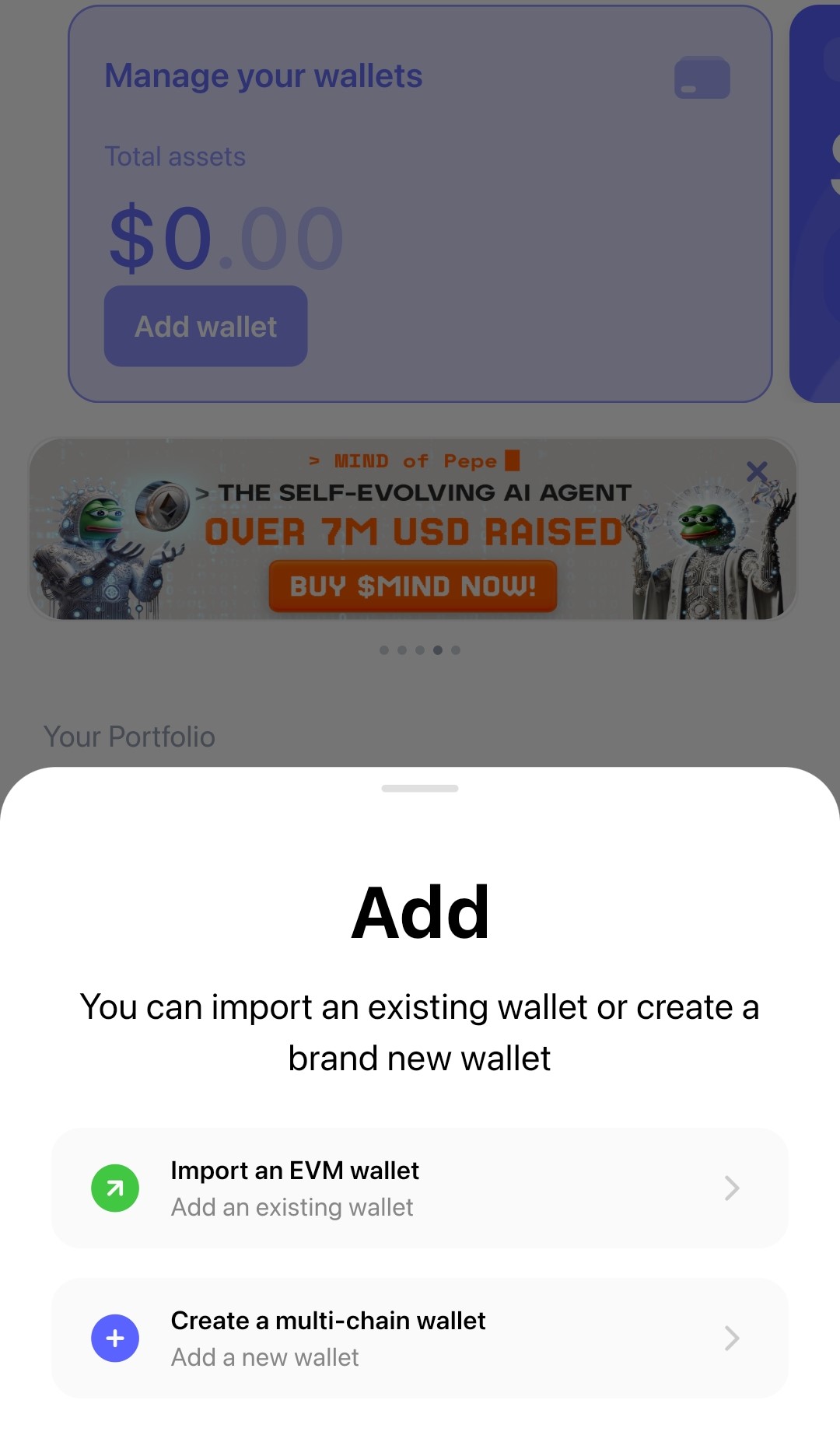
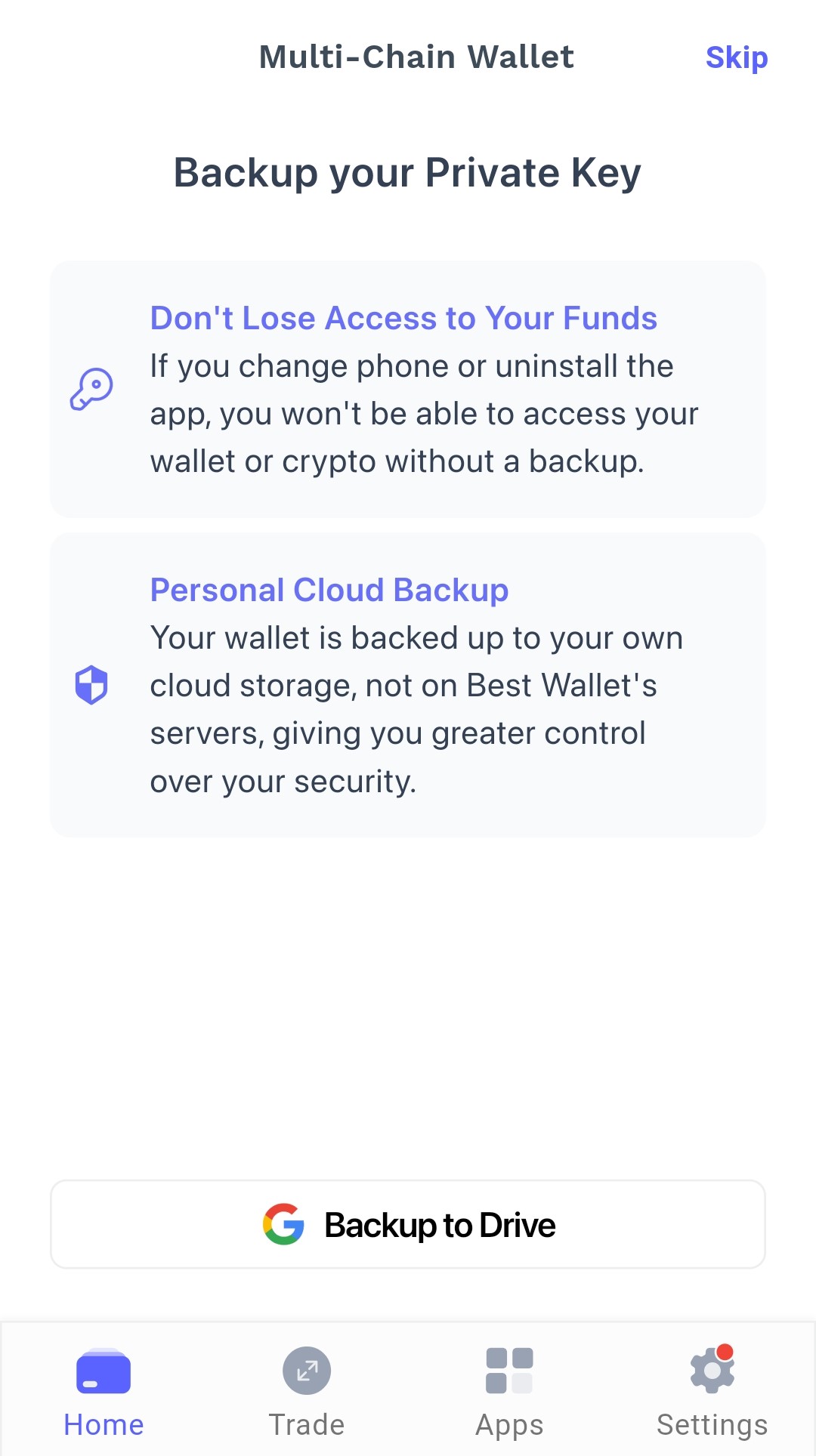
3. Complete any customizations, such as renaming and setting a theme color. Your imported wallet is now ready to use.
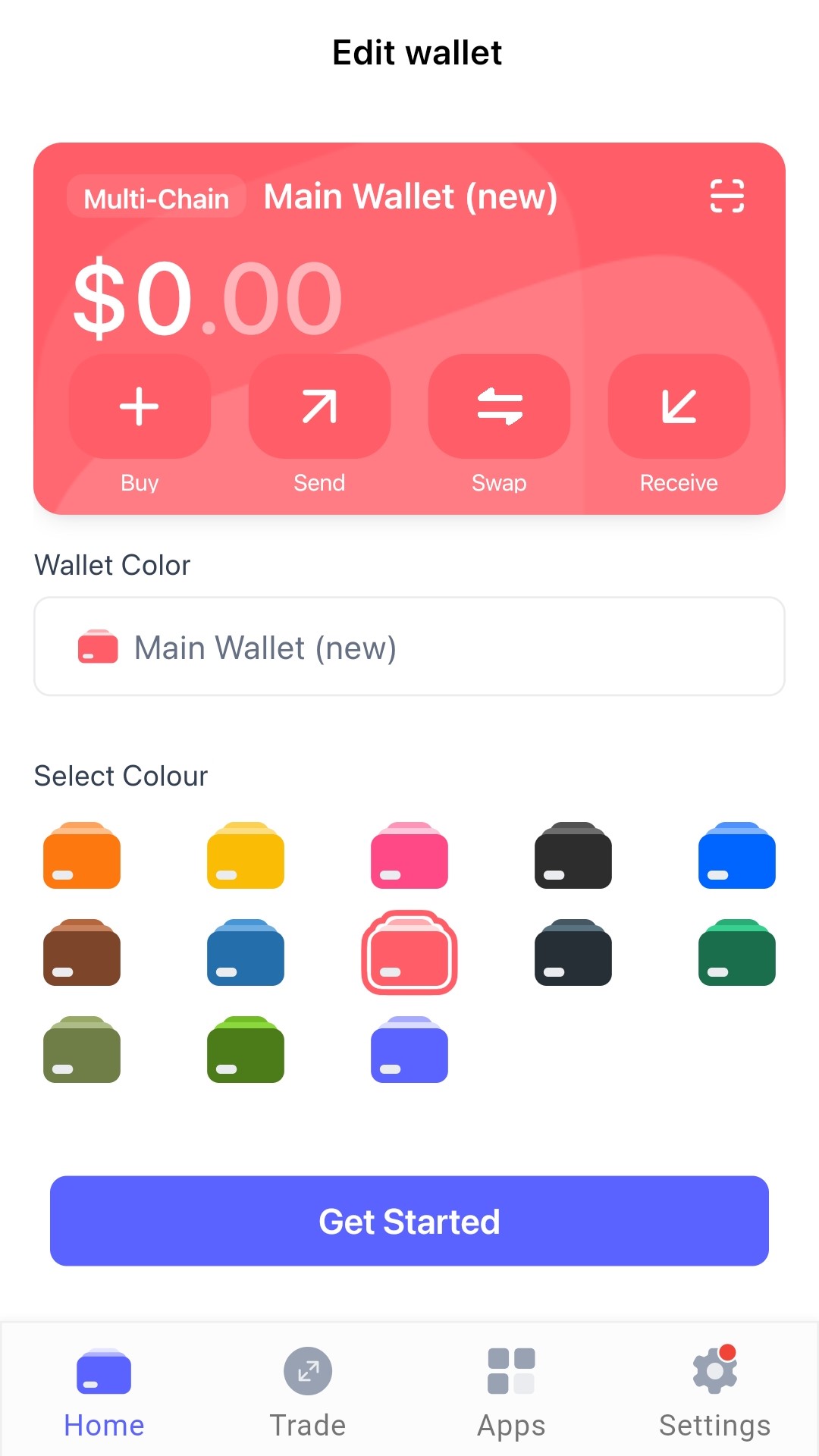
Tangem Wallet Review – Conclusion
The most crucial step before investing in crypto is choosing the right crypto wallet. Tangem is a splendid cold wallet, no doubt. It has huge storage and secure technology. However, its upfront cost and reliance on a physical card make it less appealing to traders who prefer simplicity. Best Wallet gives you more freedom, instant asset access, and reliable backup options.
So, whether you want to pay and wait days for a wallet to arrive, or download an app and invest the money there within minutes, is totally up to you.

